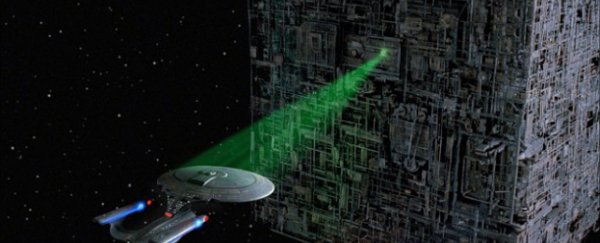Physicists have developed the first ever long-distance optical tractor beam, and it can both repel and attract objects.
A functional tractor beam, like the kind used in the Star Wars films to pull ships in, is one of those sci-fi technologies that scientists dream about. And scientists from the Australian National University are a step closer to creating one that can both repel and attract objects.
"Demonstration of a large scale laser beam like this is a kind of holy grail for laser physicists," said Wieslaw Krolikowski, one of the researchers, in a press release.
Impressively, their tractor beam entails only one hollow laser beam, which is bright around the edges but dark in its centre, and it can move particles 100 times further than previous experiments.
In fact, it's the first long-distance optical tractor beam ever created, and it has successfully moved gold-coated glass particles one fifth of a millimetre in diameter a distance of up to 20 centimetres.
The technique could be used to help control atmospheric pollution by filtering tiny and delicate particles out of the air.
And the scientists also believe the tractor beam could be scaled up.
"Because lasers retain their beam quality for such long distances, this could work over metres. Our lab just was not big enough to show it," said co-author Vladlen Shvedov in the release.
Previous tractor beams have been created in water, or have relied on momentum within the photons, or particles of light, to make objects move. But this new method relies on the energy from the laser heating up the particles and the air around them.
The research was done on gold-coated hollow glass particles, which become trapped in the dark centre of the laser beam. Energy from the laser then hits the particle and travels across its surface, where it's absorbed, creating hotspots. As air collides with these hotspots, it shifts away from the surface, causing the particle to move in the opposite direction.
In order to manipulate whether the particle is moved towards or away from the tractor beam, the team control the polarisation of the laser beam to change the position of the hotspot.
"We have devised a technique that can create unusual states of polarisation in the doughnut shaped laser beam, such as star-shaped (axial) or ring polarised (azimuthal)," said co-leader of the study Cyril Hnatovsky. "We can move smoothly from one polarisation to another and thereby stop the particle or reverse its direction at will."
The research is published in Nature Photonics.
Source: Australian National University
